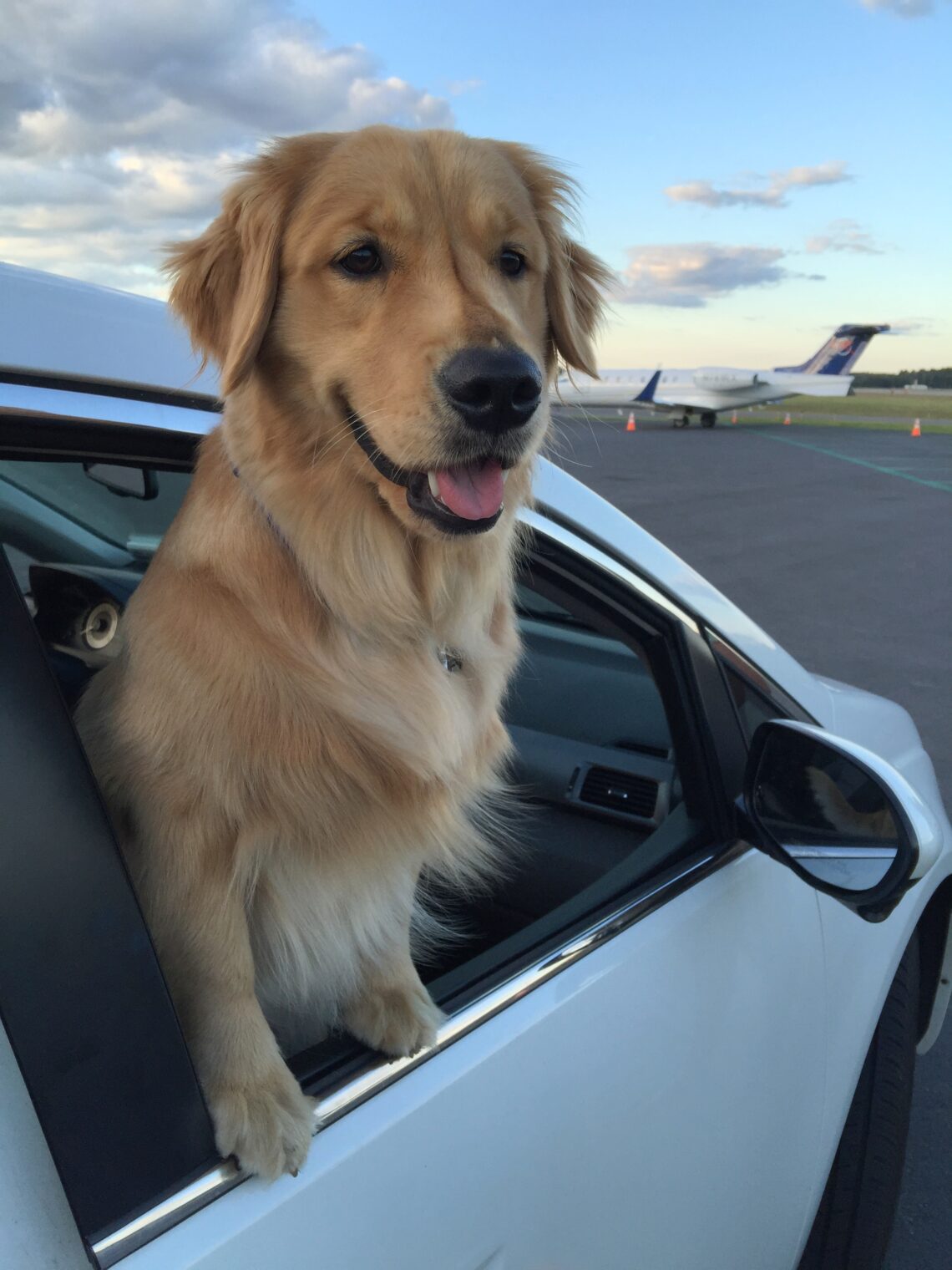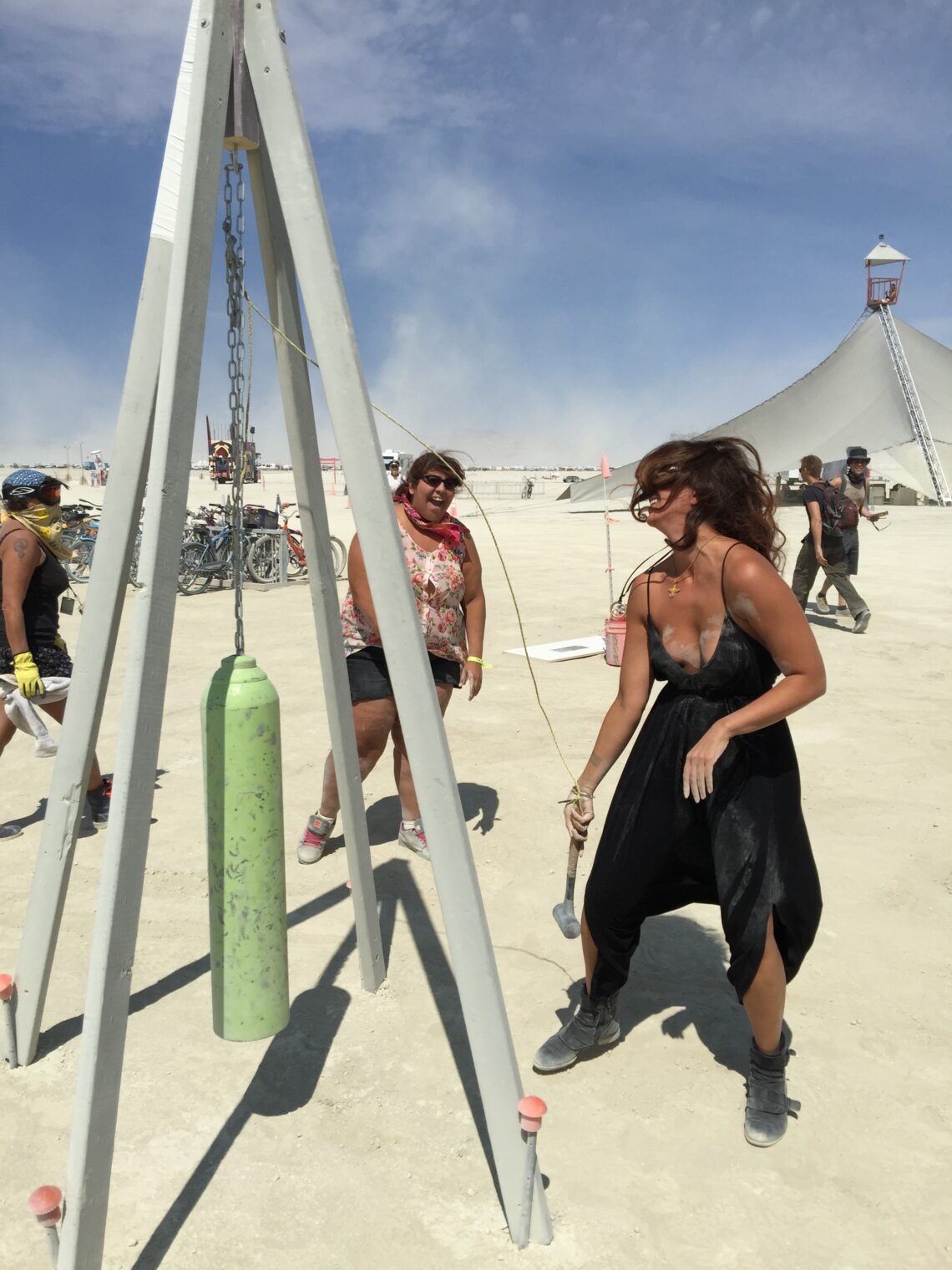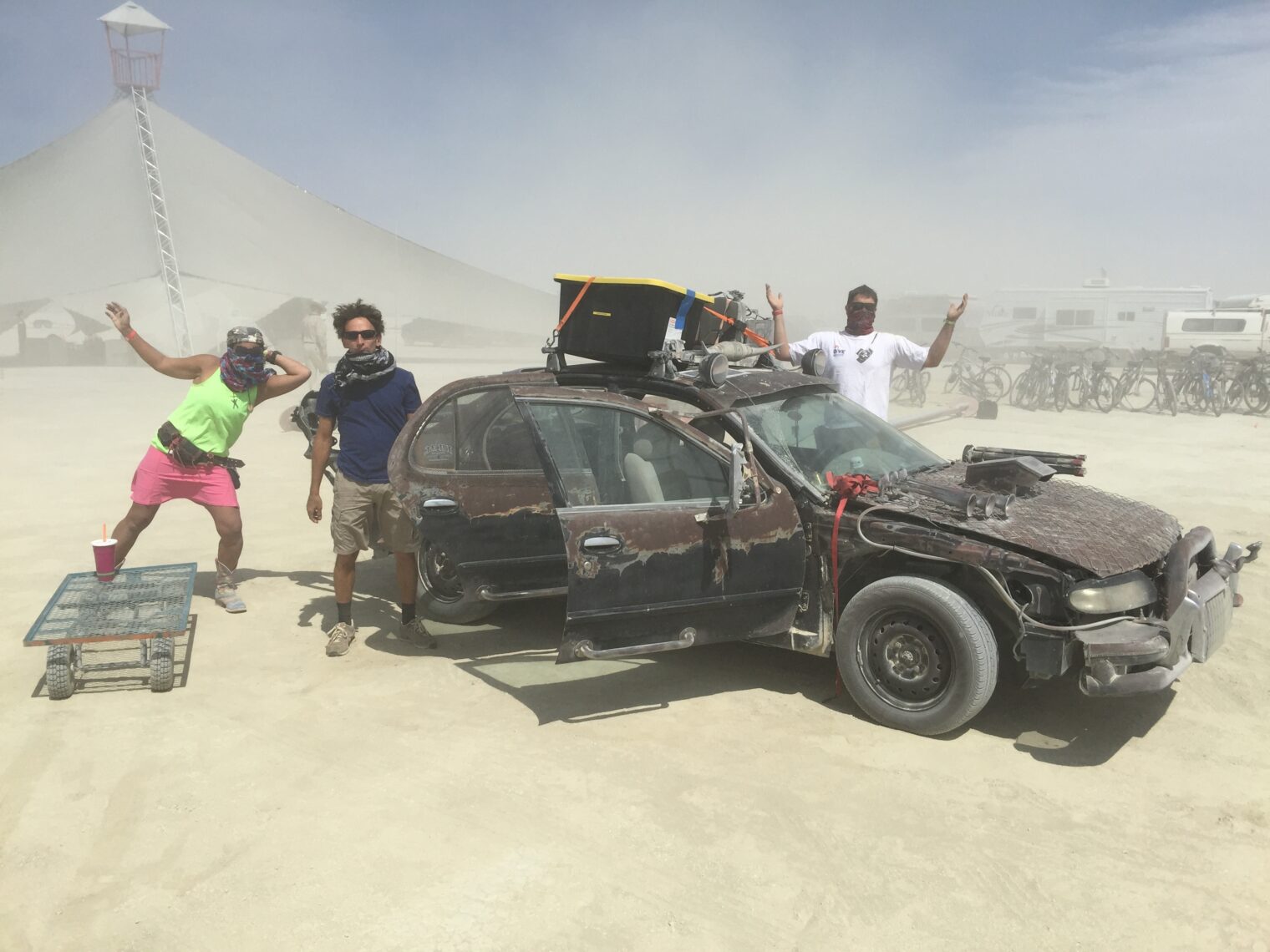Does it make sense to fly a turboprop into Burning Man? No. Can it be done safely? Yes.
A friend’s dream was to land an airplane at Black Rock City Municipal Airport (88NV; see also Airnav). Starting from Boston and with lines of thunderstorms in the middle of the country, the sensible choice for the cross-country trip was a Pilatus PC-12. We were able to climb to FL260 (“26,000 feet” if you’re sitting in the back, but probably closer to 27,000′ above the Earth’s surface in the summer time when the atmosphere expands) to get over the weather.
We departed Boston late in the afternoon, stopped to fuel in Lincoln, Nebraska, and stopped for the night in Salt Lake City. Being tired flatlanders, unwilling to mix night flying with mountain flying, we requested an ILS approach into KSLC. The glorious plan to get up at first light and land at 88NV before the winds picked up was derailed by my friend’s admission that he had packed just two thin blankets into the Boston Burners shipping container that would be waiting for us upon arrival. (If you affiliate with your local Burners you can probably fly into Burning Man carrying next to nothing in the plane itself. Containers are dropped into Burning Man from all around the U.S.) We took an UberX to Target and picked up sleeping bags rated for 40 degrees. (It seems as though the temperature ratings are designed for people who share their sleeping bags with Newfoundland dogs; my friend was freezing in long underwear inside his bag while the overnight low was between 35 and 40 degrees .)
During the 1-hour leg from Salt Lake City we reviewed the extensive-yet-incomplete (no instructions regarding a go-around) materials that pilots are required to read in advance from http://88nv.burningman.com/ . About 10 miles away from “Frog Pond” we called the Unicom at this private airport, were asked if we had the manifest that we were required to obtain after taking a quiz on the site, and then were given permission to land. There is no control tower at Burning Man despite there being as many as 40 operations per hour (more than many towered airports; an “operation” could be a takeoff or a landing and most are short sightseeing loops around Black Rock City that are gifted by Burners who bring in small aircraft and order 100LL in barrels).
The challenges of landing a turboprop at Burning Man include the following:
- by design, traffic converges from three different directions at Frog Pond: (1) from Reno, (2) from Winnemucca, (3) from the sightseeing loop; this is madness in my opinion and your traffic warning system will be constantly screaming at you
- the range of aircraft speeds is wide; your turboprop that is comfortable at 120 knots in the pattern will be sharing with 60-knot two-seaters and 40-knot ultralights
- the pattern to be flown from Frog Pond is tight and designed for slow piston aircraft, e.g., with an 800′ AGL pattern height
- 88NV will not be in your terrain warning system’s database. Passengers will be treated to “Terrain! Terrain! Pull Up! Pull Up!” as you turn Base to Final (make sure that you know where the “mute” button is!)
By the time that we got to Burning Man it was 11:15 am and there was a gusty 20-knot crosswind. Due to the long-for-a-PC-12 runway (5000′) it was easy to land with flaps 30 (40 is the max/standard) and no braking. It was only when we opened the door and were practically blown off our feet that we realized how strong the wind was. We couldn’t figure out if there were any intermediate taxiways so we just rolled to the end of the runway and followed a marked taxiway from there to the ramp. Parking is simple. All of the admin effort that you’d expect to be put into running a control tower is put into assigning parking spaces and directing pilots to parking.


Officially you’re supposed to tie down your airplane against the possibility of 100 mph winds. We used FlyTies successfully though presumably if an 8000 lb. airplane is being picked up by the wind it will also bring the stakes with it (FlyTies claims a “1200 lb. holding strength per stake” so that provides an extra 3600 lbs. of theoretical weight.) Hammers can be tough to borrow so if you have a heavy airplane also consider packing a stake-driving hammer. And don’t forget the ropes!
Standard turboprop covers should be augmented with 3M blue painter’s tape over static ports and any other points of potential dust ingress. I would recommend that the pilot apply the tape personally so that he or she will have a memory of what has been taped. Then do a couple of extra walk-arounds from a 10′ distance prior to departure to make sure that all of the blue tape has been removed. Don’t tape over fuel vents! (See these photos of a Cessna Mustang for inspiration.) The general wisdom seems to be not to cover the plane, but rather to rely on interior sun-blocking shades. The dust per se won’t scratch windows but after it gets under a cover it might be ground into the windows. Unless you are 12′ tall good luck getting a canopy cover on a PC-12.
If paid in advance, Playa Bike Repair will have a bicycle waiting for you at the airport. There was a rack of Giant hybrids and I was able to pick one in XL frame size, unlock it with an emailed combination, and go. There are hand-tow wagons that you can use to get luggage from the plane to the airport gate.
There is a periodic shuttle tractor from the airport into BRC, about a one-mile journey. A friend of ours has an unofficial art car and came to pick us up (text messages worked at nearly all times in BRC in 2015, at least on Verizon; 3G mobile Internet worked well at 0900 when all of the true Burners were asleep).
What happened during Burning Man per se?


Keep a 5-gallon jug of water and some paper towels in the plane for departure. You’ll need to douse the windshield with water to get the dust off. Also the top of the cowl so the propwash doesn’t simply blow the dust right back onto the windshield. Also keep a bunch of large plastic trash bags and put anything that you’re going to carry in the airplane into the trash bags before loading. This will minimize Playa dust in the interior. As I was de-staking in preparation for departure, a PC-12 pilot and the director of maintenance for STAjets happened to stroll by. They had an hour to kill between flights (they do about 3 daily round-trips from the Los Angeles area) and gifted me some of their time and expertise.
If you’re a flatlander and have an engine that costs $1 million but whose manufacturer can’t be bothered to include FADEC, keep in mind that Burning Man will qualify as a hot-and-high departure. In the PC-12 that means manually limiting torque to about 38 psi rather than relying on the torque limiter to protect the Pratt & Whitney PT6. Departure is 500′ AGL straight out for three miles, to avoid people coming from Reno and entering the sightseeing loop.
The true fun starts when you get back. Pratt & Whitney says that you need to wait 40 minutes for engine cool-down before a compressor wash can be done. So in theory you could have it done at your first stop, assuming the place was experienced with PC-12s and had the right tools. But you’ll probably be leaving either on a Sunday or on Labor Day and therefore shops won’t be open. If you don’t have on-field maintenance, plan to spend a full day post-Burning Man flying somewhere to get a compressor wash done and an exterior wash at the same time. Also budget for an interior detail. By the time that you’re done cleaning up you will have spent far more time on plane maintenance/housekeeping than you saved not waiting in line at the car gate. And you will have spent more money just on airplane cleaning than it would cost to buy two round-trip airline tickets to Reno and a week of rental car. (See above for “Does it make sense?”)
So… if you’re going to do it:
- Brief in advance on the airport web site
- Pack: FlyTies, rope, hammer, trash bags, water jugs, soft paper towels, 3M blue painter’s tape, bag of clean clothes to leave in the airplane and change into
- Schedule your trip and maintenance so that you are due for a compressor wash in early September anyway
How about turbojets? One sometimes sees fake photos mocking the arrival of a Silicon Valley billionaire in a Gulfstream. My understanding is that a Learjet with a gravel kit landed in 2015 and some Citation jets also have gravel kits that should make it possible. Certainly the Black Rock Desert does have a rich history of turbojet-powered land vehicles (Wikipedia). The slower the jet the easier it would be to make this work given the traffic patterns and procedures published by the 88NV folks.
Related:




When you’ve time to spare, go by air.
Sounds more like (somebody else’s) 172 territory.
Glad you had a good trip. I was watching you cross the country courtesy of Flightaware. You were certainly pulling a few late night hours!